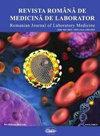循环氨基酸作为独立于胰岛素抵抗的内脏脂肪组织指纹:一项针对女性的代谢组学研究
IF 0.5
4区 医学
Q4 MEDICINE, RESEARCH & EXPERIMENTAL
引用次数: 0
摘要
摘要简介:尽管肥胖及其生物标志物已经被深入研究,但人们对内脏脂肪独立于胰岛素抵抗的代谢组学特征知之甚少,而胰岛素抵抗通常伴随着内脏脂肪水平的升高。我们的研究旨在研究在健康受试者中,作为独立于胰岛素抵抗的内脏脂肪增加的生物标志物的氨基酸(AA)水平的具体变化。方法:本横断面研究纳入42名成年女性。根据其内脏脂肪面积(<100 cm2和≥100 cm2),采用AAs靶向代谢组学对血清样本进行分析。结果:通过校正t检验和监督偏最小二乘判别分析(PLS-DA),我们确定了4种AAs在内脏脂肪高的组中显著升高:脯氨酸(投影变量重要性[VIP]预测值:1.97)、酪氨酸(VIP: 2.21)、半胱氨酸(VIP: 1.19)、异亮氨酸(VIP: 1.04;假定值< 0.05)。内脏脂肪高的组甘氨酸显著降低(VIP: 1.65;假定值< 0.05)。所有鉴定出的AAs均与内脏脂肪相关,独立于胰岛素抵抗的稳态模型评估(回归系数p值<0.05)。结论:内脏脂肪增加的人可能破坏的代谢途径是苯丙氨酸、酪氨酸和色氨酸的生物合成;酪氨酸代谢;甘氨酸、丝氨酸和苏氨酸代谢;乙醛酸盐和二羧酸盐代谢,半胱氨酸和蛋氨酸代谢。本文章由计算机程序翻译,如有差异,请以英文原文为准。
Circulating amino acids as fingerprints of visceral adipose tissue independent of insulin resistance: a targeted metabolomic research in women
Abstract Introduction: Although obesity and its biomarkers have been intensively studied, little is known about the metabolomic signature of visceral adiposity independent of insulin resistance that frequently accompanies increased levels of visceral fat. Our study aimed to investigate specific changes in amino acid (AA) levels as biomarkers of increased visceral adiposity independent of insulin resistance, in healthy subjects. Methods: Forty-two adult women were included in this cross-sectional study. Serum samples were analyzed by AAs targeted metabolomics according to their visceral fat area (<100 cm2 and ≥100 cm2). Results: By corrected t-test and supervised partial least-squares discriminant analysis (PLS-DA) we identified 4 AAs that were significantly higher in the group with higher visceral fat: proline (variable importance in the projection [VIP] predicted value: 1.97), tyrosine (VIP: 2.21), cysteine (VIP: 1.19), isoleucine (VIP: 1.04; p-values <0.05). Also, glycine was significantly lower in the group with higher visceral fat (VIP: 1.65; p-value <0.05). All AAs identified were associated with visceral fat independent of homeo-static model assessment for insulin resistance (p-value for regression coefficients <0.05). Conclusion: Metabolic pathways that might be disrupted in persons with increased visceral fat are phenylalanine, tyrosine, and tryptophan biosynthesis; tyrosine metabolism; glycine, serine, and threonine metabolism; glyoxylate and dicarboxylate metabolism, and cysteine and methionine metabolism.
求助全文
通过发布文献求助,成功后即可免费获取论文全文。
去求助
来源期刊

Revista Romana De Medicina De Laborator
MEDICINE, RESEARCH & EXPERIMENTAL-
CiteScore
0.31
自引率
20.00%
发文量
43
审稿时长
>12 weeks
期刊介绍:
The aim of the journal is to publish new information that would lead to a better understanding of biological mechanisms of production of human diseases, their prevention and diagnosis as early as possible and to monitor therapy and the development of the health of patients
 求助内容:
求助内容: 应助结果提醒方式:
应助结果提醒方式:


